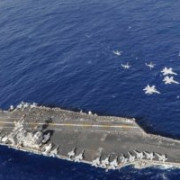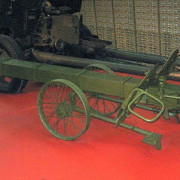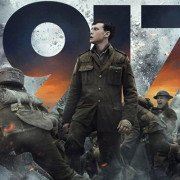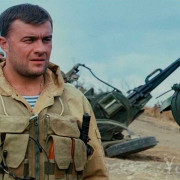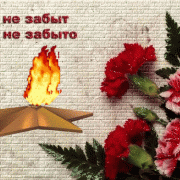Pz.kpfw. iii ausf. e
Содержание:
General info
Survivability and armour
Smoke grenades
Creation of a smoke screen in front of the vehicle
Armourfront / side / back
Hull53 / 30 / 53
Turret50 / 30 / 30
Crew5 people
Visibility88 %
Armour type:
- Rolled homogeneous armour
- Cast homogeneous armour (Gun barrel shroud, Cupola)
- High hardness rolled armour (Front spaced armour)
| Armour | Front | Sides | Rear | Roof |
|---|---|---|---|---|
| Hull | 50 + 20 mm (12°) Front plate 25 mm (85°), 50 mm (52°) Front glacis 50 mm (25°) Lower glacis | 30 + 5 mm | 50 mm | 15 mm |
| Turret | 57 mm + 20 mm Turret front 50 + 20 mm Gun mantlet | 30 + 5 mm | 30 mm | 10 mm |
| Cupola | 100 mm | 10 mm |
Notes:
- The tank has 50 mm of armour at the front of the hull and 57 on the turret front, but there is an additional 20mm plate on the upper hull and at the front of the turret, increasing the effective armour to 70mm and 77mm respectively. When the armour is angled, this tank becomes very strong frontally.
- Side armour of the hull and turret are 30 mm and are protected by an extra 5 mm plate that protects from HEAT and HE rounds.
- The strong turret armour makes this tank powerful when hull-down, as many enemies will only be able to penetrate the cupola, only knocking out the commander. However, don’t allow anyone to freely fire there, as some unlucky shot fired there can still occasionally cause severe damage.
- Suspension wheels are 15 mm thick while tracks are 20 mm thick.
- Side skirts are removed when the «Winterketten» modification is installed.
Mobility
Speedforward / back
AB60 / 12 km/h
RB and SB54 / 10 km/h
Number of gears6 forward
1 back
Weight23.0 t
Engine power
AB572 hp
RB and SB300 hp
Power-to-weight ratio
AB24.9 hp/t
RB and SB13.0 hp/t
| Game Mode | Max Speed (km/h) | Weight (tons) | Engine power (horsepower) | Power-to-weight ratio (hp/ton) | |||
|---|---|---|---|---|---|---|---|
| Forward | Reverse | Stock | Upgraded | Stock | Upgraded | ||
| Arcade | 60 | 12 | 23 | 465 | 572 | 20.22 | 24.87 |
| Realistic | 54 | 10 | 265 | 300 | 11.52 | 13.04 |
Modifications and economy
Repair costBasic → Reference
AB1 000 → 1 363
RB1 400 → 1 908
SB1 500 → 2 044
Total cost of modifications13 820
32 500
Talisman cost860
Crew training16 000
Experts55 000
Aces270
Research Aces250 000
Reward for battleAB / RB / SB
40 / 70 / 80 %
130 / 130 / 130 %
Modifications
| Mobility | Protection | Firepower | ||||||||||||||||||||||||
|---|---|---|---|---|---|---|---|---|---|---|---|---|---|---|---|---|---|---|---|---|---|---|---|---|---|---|
|
|
|
История создания и использования боевой
Развитие
танковыйkampfwagen IIIсредний танк, илиPanzer IIIбыла разработана в 1930-х годах. С началом 1934 года Хайнц Гудериан поставил некоторые спецификации для нового танка, которого отдел армии оружия занялся спроектировать танк весить не более 24 000 кг с максимальной скоростью 35 км в час. Эта tank’s роль должна была быть основным танком германской армии и, как ожидается, чтобы уничтожить противоположные танки, а не как танк сделал, чтобы уничтожить anti-tank орудий и противостоящие пехотинцев, которыхPanzer IV взял в.
Damlier-Benz, Krupp, MAN и Rheinmetall произвели собрание прототипы спецификации и модель Damlier-Benz были выбраны после тестирования в 1936-1937. Модель Panzer III использовали leaf-spring подвеску на ранних моделях (Ausf. Pmlk Ausf. D) перед использованием six-wheeled torsion-bar суспензии в Ausf. E и за ее пределами. Panzer III имел экипаж из пяти людей, командир, наводчика, грузчика, водителя, водителя и помощника. Лучшая особенность Panzer III во время его введения, что является самым упускаются из вида была three-man турели, которая не так часто, в то время. Это освобождает командир, чтобы быть в состоянии эффективно командовать танк при сохранении ситуационной осведомленности, а не тяготиться ролью погрузчика или наводчика, повышения боевой эффективности танка. Несмотря на это, а усовершенствованном дизайн, турель не была револьверными корзины для экипажа. Это было доказано дизайн и производство началось в мае 1937 г. Общее количество Panzer IIIs танков, построенных в своей производственной жизни было 5,774 единиц (за исключением; ].. ;; Sturmgeschütz III Ausf. F;! !!! StuG III ] ]! вариант).
Характеристики
Panzer III Ausf. А-С было 15 мм брони со всех сторон 10 мм на верхней части и 5 мм на дне. Это было быстро повышен до 30 мм на передней, боковых и задней на Ausf. D, E, F, G и модель. Panzer III Ausf. Fпризнаки 50 мм KwK 38 пушек, обновление по сравнению с предыдущим 37 мм KwK 36. Танкового Ausf. F имела 300 PS Maybach HL 120 TRM двигатель, который дал ему максимальную скорость около 40 km/h (25 миль в час) с радиусом действия 155 км (96 ми.).
Боевое использование
Panzer III Ausf. F был первым продиктована немецкой армии проблемами их tank-killing танка быть undergunned во время французской кампании, где появление французского Char B1 и англичанMatilda танки доказали, что их нынешний арсенал было недостаточно, чтобы противостоять этим угрозам. Хотя это было начато в ходе кампании, это было до того как оно может быть полностью реализовано среди бронетанковых сил. Он не wasn’t до операции Барбаросса, где появление советскойТ-34 а также КВ-1 танки заставили немцев взять лучшее оружие для их anti-tank инвентаря. Решение было 50 мм KwK 38, что помогло Panzer III быть в состоянии уничтожить эти советские танки с APCR округляет. Несмотря на то, что новые советские танки могут поставить Panzer III из прифронтовых обязанностей, он все еще оставался в более общей советскойТ-26 а также серия BT легкие танки были более легко разрушается Panzer III.
Немецкая армия продолжала модернизировать свои Panzer III, чтобы держать их в эксплуатацию как можно дольше. Panzer III Ausf. H признакам еще 30 мм броню, наносимой на оригинальных 30 мм брони на корпусе
Следующее важное обновление было доPanzer III Ausf. J, который показал solid 50 мм фронтальной и задней броне.
External links
Paste links to sources and external resources, such as:
- topic on the official game forum;
- other literature.
| Germany medium tanks | |
|---|---|
| Pz.III | Pz.III B · Pz.III E · Pz.III F · Pz.III J · Pz.III J1 · Pz.III J1 TD · Pz.III L · Pz.III M · Pz.III N |
| Pz.IV | Pz.IV C · Pz.IV E · Pz.IV F1 · Pz.IV F2 · Pz.IV G · Pz.IV H · Pz.IV J · Pz.Bef.Wg.IV J |
| Pz.V | Panther A · Panther D · Panther F · Panther G · Ersatz M10 · Panther II |
| M48 Upgrades | M48A2 G A2 · M48 Super |
| Leopard 1 | Leopard I · Leopard A1A1 · Leopard A1A1 (L/44) · Leopard 1A5 · C2A1 |
| Leopard 2 | PT-16/T14 mod. · Leopard 2K · Leopard 2A4 · Leopard 2 PL · Leopard 2A5 · Leopard 2A6 |
| Trophies | ▀M4 748 (a) · ▀T 34 747 (r) |
| Other | Nb.Fz. · KPz-70 |
| USA | mKPz M47 G · M48A2 C |
Armaments
Main armament
50 mm KwK L/42 cannon
Ammunition99 rounds
Reloadbasic crew → aces
5.2 → 4.0 s
Vertical guidance-10° / 20°
Main article: KwK L/42 (50 mm)
| 50 mm KwK L/42 | Turret rotation speed (°/s) | Reloading rate (seconds) | |||||||||||
|---|---|---|---|---|---|---|---|---|---|---|---|---|---|
| Mode | Capacity | Vertical | Horizontal | Stabilizer | Stock | Upgraded | Full | Expert | Aced | Stock | Full | Expert | Aced |
| Arcade | 99 | -10°/+20° | ±180° | N/A | 5.2 | 7.2 | 8.8 | 9.7 | 10.4 | 5.20 | 4.60 | 4.24 | 4.00 |
| Realistic | 3.3 | 3.8 | 4.7 | 5.2 | 5.5 |
Ammunition
| Penetration statistics | |||||||
|---|---|---|---|---|---|---|---|
| Ammunition | Type ofwarhead | Penetration @ 0° Angle of Attack (mm) | |||||
| 10 m | 100 m | 500 m | 1,000 m | 1,500 m | 2,000 m | ||
| PzGr 39 | APC | 80 | 76 | 62 | 48 | 38 | 29 |
| PzGr 40 | APCR | 116 | 107 | 74 | 47 | 30 | 19 |
| Shell details | |||||||||
|---|---|---|---|---|---|---|---|---|---|
| Ammunition | Type ofwarhead | Velocity(m/s) | ProjectileMass (kg) | Fuse delay(m) | Fuse sensitivity(mm) | Explosive Mass(TNT equivalent) (g) | Ricochet | ||
| 0% | 50% | 100% | |||||||
| PzGr 39 | APC | 685 | 2.05 | 1.2 | 9 | 28.9 | 48° | 63° | 71° |
| PzGr 40 | APCR | 1,050 | 0.9 | N/A | N/A | N/A | 66° | 70° | 72° |
Ammo racks
Ammo racks of the Pz.III J
| Fullammo | 1strack empty | 2ndrack empty | 3rdrack empty | 4thrack empty | Visualdiscrepancy |
|---|---|---|---|---|---|
| 99 | 74 (+25) | 48 (+51) | 33 (+66) | 1 (+98) | No |
Notes:
- Racks disappear when all shells in the rack have been loaded/shot.
- Racks 1 to 3 emptied: 33 (+66) shells.
Machine guns
7.92 mm MG34 machine gun (coaxial)
Ammunition4 350 rounds
Belt capacity150 rounds
Reloadbasic crew → aces
10.4 → 8.0 s
Fire rate900 shots/min
Main article: MG34 (7.92 mm)
| 7.92 mm MG 34 | ||||
|---|---|---|---|---|
| Mount | Capacity (Belt) | Fire rate | Vertical | Horizontal |
| Coaxial | 4,350 (150) | 900 | N/A | N/A |
The small calibre of the MG34 machine gun makes it largely ineffective against all armoured vehicles but the ones with an open compartment. It still can be used to ping targets as a rangefinding help or to mow down minor obstacles blocking your line of sight.
General info
Survivability and armour
Armourfront / side / back
Hull53 / 30 / 53
Turret50 / 30 / 30
Crew5 people
Visibility88 %
Armour type:
- Rolled homogeneous armour
- Cast homogeneous armour (Barrel shroud, Cupola)
| Armour | Front | Sides | Rear | Roof |
|---|---|---|---|---|
| Hull | 50 mm (12°) Front plate 25 mm (86°), 50 mm (53°) Front glacis 50 mm (23-69°) Lower glacis | 30 mm | 50 mm (15-41°) Top 50 mm (11-66°) Bottom | 15 mm |
| Turret | 50 mm (12-25°) Turret front 50 mm (12-46°) Gun mantlet | 30 mm (22-25°) | 30 mm (13-16°) | 10 mm |
| Cupola | 50 mm | 10 mm |
Notes:
Suspension wheels are 15 mm thick while tracks are 20 mm thick.
Mobility
Speedforward / back
AB60 / 12 km/h
RB and SB54 / 10 km/h
Number of gears6 forward
1 back
Weight21.8 t
Engine power
AB572 hp
RB and SB300 hp
Power-to-weight ratio
AB26.2 hp/t
RB and SB13.8 hp/t
| Game Mode | Max Speed (km/h) | Weight (tons) | Engine power (horsepower) | Power-to-weight ratio (hp/ton) | |||
|---|---|---|---|---|---|---|---|
| Forward | Reverse | Stock | Upgraded | Stock | Upgraded | ||
| Arcade | 60 | 12 | 21.8 | 465 | 572 | 21.33 | 26.24 |
| Realistic | 54 | 10 | 265 | 300 | 12.16 | 13.76 |
Modifications and economy
Repair costBasic → Reference
AB1 300 → 1 680
RB800 → 1 034
SB1 100 → 1 422
Total cost of modifications6 930
9 380
Talisman cost530
Crew training3 000
Experts10 000
Aces110
Research Aces160 000
Reward for battleAB / RB / SB
20 / 30 / 60 %
112 / 112 / 112 %
Modifications
| Mobility | Protection | Firepower | ||||||||||||||||||||
|---|---|---|---|---|---|---|---|---|---|---|---|---|---|---|---|---|---|---|---|---|---|---|
|
|
|
Firepower
PzKpfw III Ausf M somewhere in southern USSR 1943. Note the armor skirts on the sides and turret.
The Panzer III was intended to fight other tanks: in the initial design stage, a 50-millimeter cannon was specified. However, the infantry at the time were being equipped with the 37-millimeter PaK 36, and it was thought that in the interest of standardization, the tanks should carry the same armament. As a compromise, the turret ring was made large enough to accommodate a 50-millimeter cannon, should a future upgrade be required. This single decision would later assure the Panzer III a prolonged life in the German army. The Ausf A to early Ausf F were equipped with a 3.7 cm KwK 36 L/46.5, which proved adequate during the campaigns of 1939 and 1940. The later Ausf F to Ausf J were upgraded with the 5 cm KwK 38 L/42, and the Ausf J to M with the longer 5 cm KwK 39 L/60 cannon in response to increasingly better armed and armored opponents.
By 1942, the Panzer IV was becoming Germany’s main medium tank because of its better upgrade potential. The Panzer III remained in production as a close support vehicle. The Ausf N model mounted a low-velocity 7.5 cm KwK 37 L/24 cannon, the same used by the early Panzer IV Ausf A to F models. These guns had originally been fitted to older Panzer IV Ausf A to F1 models, and had been placed into storage when those tanks had also been up-armed to longer versions of the 75mm gun.
All early models up to and including the Ausf F had two 7.92 mm MG 34 machine guns mounted coaxially with the main gun, and a similar weapon in a hull mount. Models from the Ausf G and later had a single coaxial MG34 and the hull MG34.
Use of Data
HobbyLink Japan, Inc. uses the collected data for various purposes:
- To provide and maintain our Service
- To notify you about changes to our Service
- To allow you to participate in interactive features of our Service when you choose to do so
- To provide customer support
- To gather analysis or valuable information so that we can improve our Service
- To monitor the usage of our Service
- To detect, prevent and address technical issues
- To provide you with news, special offers and general information about other goods, services and events which we offer that are similar to those that you have already purchased or enquired about unless you have opted not to receive such information
History
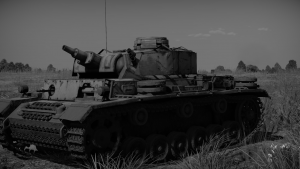
Pz.III N (Div.M.) during training
The history of Pz.Kpfw. III Ausf. N began in Germany of 1942, this variant was mainly an assault tank based on the Ausf. L and Ausf. M chassis, which was re-used to produce this tank. This variant was produced to meet the need for a stronger tank, one that could more effectively handle the Soviet T-34 and KV-1. There was also a desperate need for a special infantry support tank which would be used during advances alongside soldiers on the ground. It had a somewhat complicated development cycle, for example the widely used 75 mm long-barreled gun could not be installed in the turret due to the limited turret internal size. The German designers instead decided to use the short-barreled 7.5 cm KwK37 L/24 gun, which would be paired alongside with special hollow-charge shells. This explosive projectile packed more punch than the 5 cm KwK39 L/60 gun, so at the time it was favoured and underwent a series of trials, which were an overall success. Some design features of the tank had to be modified however, for example, the gun’s mantlet was redesigned to accommodate the changes done. Other aspects of the vehicle also became better: the gun’s recoil mechanisms were improved, the single-hinged hatch for the command turret was replaced with a two-hinged hatch, the thickness of the commander’s cupola was increased to 100 mm. This variant’s overall operational weight was around 23 tons. Most of the tanks received 5 mm side skirts (Schürzen) to protect the tank’s hull and turret., however Italian variants, in Italian fashion, removed said side skirts. Production of the Pz.Kpfw. III Ausf. N tanks began in June 1942 and lasted until August 1943. A total of 700 of these tanks were built. 3 were built from Pz.Kpfw. III Ausf. J tanks, 447 from Pz.Kpfw. III Ausf. L tanks, 213 from Pz.Kpfw. III Ausf. M tanks, and 37 from other variants after they had returned from the front.
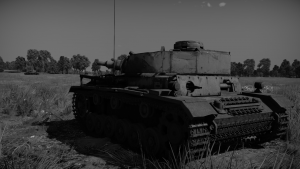
Pz.III N (Div.M.) during training
Concerning the Italian operational of this tank, Germany during the late stages of the second world war had supplied 12 units of Panzer IV G to Italy, which were placed in the Division «M» and, after the 25th of July, they were transferred to the 136th Armored Division «Centauro II». The 1st Armored Division Black Shirts «M» (for «Mussolini») was established starting from May of 1943, mainly starting from the very few survivors of the previous MVSN Battalions M who had been repatriated from the Russian front, this had to be done if there was hope for any new division being formed. The division was organised in 3 companies, the second company used 12 Panzer Kpfw III Ausf. N tanks, they were slightly modified however: they featured the 7.5 cm L/24 cannon, but something unique not previously installed on the same model, would be the smoke grenade launcher on the turret. As previously mentioned, they also removed the side skirts of the vehicle, and they were painted in a light tan color with the Divisione «M» logo painted onto the turret. They didn’t see any action during the war, most of them were still undergoing training at the time. Most of the tanks ended up in Allied hands after the war. In conclusion, this tank variant earned a good reputation with the troops that had used it and by the beginning of the battle at the Kursk Bulge, the Wehrmacht and Waffen-SS owned 155 vehicles of this type. Some of the tanks were also transferred to Romania, Slovakia, and Croatia. Tanks of this variant were used until the end of the war and were transferred to Allied forces after Germany’s surrender.
Usage in battles
Use of this tank is similar to the Pz. III F, and while it does have significantly better armour on the front than its predecessor, the higher BR of 2.3 means it faces nastier opposition in semi-frequent up-tiers to 3.3. T-34 (1940)s are almost impenetrable from any side except flat-on below the tracks. M4A1s are similar in speed to you, have thinner sides, are spacious, have powerful guns, and stabilizers. Cromwells are much faster than you with stronger guns. You can only hope for them to get overconfident, overextend, and shoot them in the side or rear. APCR post-penetration damage is not reliable enough to be counted upon when you need it the most, plus neither PzGr.40/1 or PzGr.40 can frontally penetrate a Sherman or T-34 anyway. The gap between 2.3 and 3.3 is tremendous, and is just as crippling as that between 6.7 and 7.7, for an accurate relative comparison.
Furthermore, even in the best circumstances, the high fuse sensitivity makes many lightly-armoured things with strong guns your worst nightmare, since you’ll over-penetrate repeatedly in most cases, allowing easy return fire from the person you failed to knock out, which more often than not cripples you. Enemy SPAAG, in particular, is frustrating to knock out because of your 15 mm turret ring weak spot enabling them to spray all over you to incapacitate your gunner and loader.
Pros and cons
Pros:
- Accurate and decently powerful gun
- Great gun depression
- Good Mobility
- APCR ammo has very high speed and good penetration, making shooting at long range easier
- Armour is fairly decent, can protect reliably against lower-ranked tanks
Cons:
- Penetration is a bit lacking, as is post-penetration against things in up-tiers
- Awful turret traverse speed
- Flat armour with little slope, weak side armour
- Large commander’s cupola, often sticking out above the terrain, drawing enemy attention
- Rather high fuse sensitivity for such a lacklustre cannon
Definitions
Personal Data
Personal Data means data about a living individual who can be identified from those data (or from those and other information either in our possession or likely to come into our possession).
Usage Data
Usage Data is data collected automatically either generated by the use of the Service or from the Service infrastructure itself (for example, the duration of a page visit).
Data Controller
Data Controller means a person who (either alone or jointly or in common with other persons) determines the purposes for which and the manner in which any personal data are, or are to be, processed.
For the purpose of this Privacy Policy, we are a Data Controller of your data.
Data Processor (or Service Providers)
Data Processor (or Service Provider) means any person (other than an employee of the Data Controller) who processes the data on behalf of the Data Controller.
We may use the services of various Service Providers in order to process your data more effectively.
User
The User is the individual using our Service. The User corresponds to the Data Subject, who is the subject of Personal Data.
Firepower
PzKpfw III Ausf M somewhere in southern USSR 1943. Note the armor skirts on the sides and turret.
The Panzer III was intended to fight other tanks: in the initial design stage, a 50-millimeter cannon was specified. However, the infantry at the time were being equipped with the 37-millimeter PaK 36, and it was thought that in the interest of standardization, the tanks should carry the same armament. As a compromise, the turret ring was made large enough to accommodate a 50-millimeter cannon, should a future upgrade be required. This single decision would later assure the Panzer III a prolonged life in the German army. The Ausf A to early Ausf F were equipped with a 3.7 cm KwK 36 L/46.5, which proved adequate during the campaigns of 1939 and 1940. The later Ausf F to Ausf J were upgraded with the 5 cm KwK 38 L/42, and the Ausf J to M with the longer 5 cm KwK 39 L/60 cannon in response to increasingly better armed and armored opponents.
By 1942, the Panzer IV was becoming Germany’s main medium tank because of its better upgrade potential. The Panzer III remained in production as a close support vehicle. The Ausf N model mounted a low-velocity 7.5 cm KwK 37 L/24 cannon, the same used by the early Panzer IV Ausf A to F models. These guns had originally been fitted to older Panzer IV Ausf A to F1 models, and had been placed into storage when those tanks had also been up-armed to longer versions of the 75mm gun.
All early models up to and including the Ausf F had two 7.92 mm MG 34 machine guns mounted coaxially with the main gun, and a similar weapon in a hull mount. Models from the Ausf G and later had a single coaxial MG34 and the hull MG34.
Описание конструкции танка Pz.Kpfw. III
Средний танк Pz.Kpfw. III имел классическую для немецких танков компоновку корпуса и бани: впереди располагалось совмещённое отделение управления и трансмиссионное отделение, посредине корпуса, с установленной сверху башней, – боевое отделение, в кормовой части корпуса – силовое отделение.
Компоновка корпуса была близка к классической. В передней части располагалась механическая трансмиссия, в состав которой входила 5-скоростная коробка передач, планетарный механизм поворота и бортовые передачи. Для обслуживания её агрегатов в верхнем бронелисте было сделано два больших прямоугольных люка. Трансмиссия включала механическую синхронизированную коробку передач Zahnradfabrik ZF SGF 75 пятискоростного типа. Крутящийся момент от КПП передавался на планетарные механизмы поворота и бортовые передачи. Двигатель с коробкой передач был соединён карданным валом, проходящим под полом боевого отделения. За трансмиссионным отделением разместили места для водителя (слева) и стрелок-радист (справа).
Среднюю часть корпуса занимало боевое отделение, на крыше которого устанавливалась шестигранная трёхместная башня с верхним наклонным бронелистом. Внутри неё размещались места для командира, наводчика и заряжающего. В задней части башни устанавливалась высокая наблюдательная башенка с шестью смотровыми щелями и верхним двухстворчатым люком. Кроме того, на крыше башни устанавливался перископический прибор, а в бортах имелись смотровые щели с бронестеклами. В кормовой части корпуса находилось моторное отделение. Здесь устанавливался 12-цилиндровый V-образный бензиновый двигатель Maybach HL108TR, развивавший мощность 250 л.с. при 3000 об\мин. Система охлаждения – жидкостная. Вооружение танка состояло из одной 37-мм пушки 3,7cm KwK с длиной ствола 46,5 калибра (Pz. III Ausf. A – Pz. III Ausf. D), 50-мм пушки 5.0cm KwK L/42 с длинной ствола 42 калибра, с декабря 1941 года – длинноствольной 50-мм пушки 5.0cm KwK L/60 (Pz. III Ausf. G) или 75-мм пушки 7.5cm KwK L/24 (все остальные модификации). Согласно табличным значениям бронебойный снаряд 3.7cm Pzgr массой 815 грамм развивал начальную скорость 1020 м\с и мог пробить на дистанции до 500 метров вертикально установленный лист брони толщиной 34 мм. Но фактически бронепробиваемость 37-мм снарядов оказалась гораздо ниже, что впоследствии заставило немецких конструкторов постоянно искать пути усиления вооружения. Дополнительное стрелковое вооружение состояло из трех 7,92-мм пулеметов MG34. Два из них монтировались в маске справа от орудия, а третий находился в лобовом листе корпуса. Боекомплект к 37-мм пушке составил 120 бронебойных и осколочно-фугасных выстрелов, а также 4425 патронов к пулеметам.
Характеристики
вооружения
1 х 7,5 смKwK 37 Пушка (64 раундов)
1 х 7,92 ммMG 34 Пулемет (3450 раундов)
Основное вооружение
1 х 7,5 смKwK 37 пушка
- амуниция Capacity:64 Оболочки
- Gun Depression:-10 °
- Gun Elevation:20 °
- Турель вращения Speed:8.3 ° /s (фонда), 11,5 ° (/sмодернизированный), __._ ° /s (До + Полная экипажа) __ ._ ° /s (До + экспертов Qualif .), __._ ° /s (До + Ас Qualif .)
- Перегрузочный Rate:4.3s (Шток), __._ s (; Djduuvzz, полный экипаж), __._ s (До + Expert Qualif .), __._ s ( До + Ас Qualif .)
1 х 7,5 смKwK 37 пушка
- амуниция Capacity:64 Оболочки
- Gun Depression:-10 °
- Gun Elevation:20 °
- Турель вращения Speed:8.3 ° /s (фонда), 9,8 ° (/sмодернизированный), __._ ° /s (До + Полная экипажа) __ ._ ° /s (До + экспертов Qualif .), __._ ° /s (До + Ас Qualif .)
- Перегрузочный Rate:4.3s (Шток), __._ s (; Djduuvzz, полный экипаж), __._ s (До + Expert Qualif .), __._ s ( До + Ас Qualif .)
1 х 7,5 смKwK 37 пушка
- амуниция Capacity:64 Оболочки
- Gun Depression:-10 °
- Gun Elevation:20 °
- Турель вращения Speed:8.3 ° /s (фонда), 9,8 ° (/sмодернизированный), __._ ° /s (До + Полная экипажа) __ ._ ° /s (До + экспертов Qualif .), __._ ° /s (До + Ас Qualif .)
- Перегрузочный Rate:4.3s (Шток), __._ s (; Djduuvzz, полный экипаж), __._ s (До + Expert Qualif .), __._ s ( До + Ас Qualif .)
амуниция
| амуниция | Проникновение»’в мм»’@ 90 ° | Тип боеголовка | Скорость в m/s | Снаряд Масса в кг | Задержка предохранителя в m: | Предохранитель чувствительность в mm: | Масса взрывчатого вещества в тротиловый эквивалент в g: | Нормализация при 30 ° от horizontal: | Рикошет от normal: | |||||||
|---|---|---|---|---|---|---|---|---|---|---|---|---|---|---|---|---|
| 10м | 100m | 500m | 1000m | 1500m | 2000m | 0% | 50% | 100% | ||||||||
| K.Gr.rot Pz. | 56 | 54 | 50 | 46 | 42 | 38 | бронебойный снаряд с бронебойным наконечником | 385 | 6,8 | 1,3 | 15,0 | 80 | + 4 ° | 48 ° | 63 ° | 71 ° |
| Hl.Gr. 3 | 80 | 80 | 80 | 80 | 80 | 80 | ВЫСОКАЯ ТЕМПЕРАТУРА | 450 | 4,6 | 0,0 | 0,1 | 872,1 | + 0 ° | 62 ° | 69 ° | 73 ° |
| Hl.Gr. 38C | 100 | 100 | 100 | 100 | 100 | 100 | ВЫСОКАЯ ТЕМПЕРАТУРА | 450 | 4,8 | 0,0 | 0,1 | 875,5 | + 0 ° | 62 ° | 69 ° | 73 ° |
| Sprgr. 34 | 10 | 10 | 10 | 10 | 10 | 10 | ОН | 420 | 5,7 | 0,1 | 0,1 | 690 | + 0 ° | 79 ° | 80 ° | 81 ° |
| амуниция | Тип боеголовки | Скорость в m/s | Снаряд Масса в кг | радиус экрана в м | Время экрана в сек | Экран Время удержания в s: | Масса взрывчатого вещества в тротиловый эквивалент в g: |
|---|---|---|---|---|---|---|---|
| K.Gr.Rot Nb. | дым | 423 | 6,8 | 13 | 5 | 20 | 50 |
Боеприпасы стеллажи
Боеприпасы стеллажи для Panzer III На.
| Полный боезапас | Первая наберет пустым | Второй наберет пустым | Третий наберет пустым | Четвёртая наберет пустым | Пятые наберет пустым | Шестых наберет пустым | Седьмых наберет пустым | рекомендации | Визуальный Расхождение |
|---|---|---|---|---|---|---|---|---|---|
| 64 | 55 (+9) | 46 (+18) | 37 (+27) | 28 (+36) | 19 (+45) | 10 (+54) | 1 (+63) | Револьверный empty:46 (+18) | нет |
Вторичное вооружение
1 × 7,92 ммMG 34 Пулемет (коаксиальный)
- Commander
- Gunner
- Loader
- Водитель
- Помощник водителя
Члены экипажа Total:5
броневой
броневой type:
- Прокат гомогенной брони
- Cast однородны доспехи (Gun мантелет, куполообразный)
- Высокая твердость проката брони (передний разнесены брони)
| броневой | Фронт | Стороны | Заднее | крыша |
|---|---|---|---|---|
| Халл | 50 + 20 мм (12°)передняя пластина<! Tgbbrr > 25 мм (85°), 50 мм (52°)передний Glacis<! Tgbbrr > 50 мм (25°)Нижний Glacis | 30 + 5 мм | ; 15 мм !!! | |
| турель | ; 30 !!! (24-25°) + 5 мм | ; 10 мм !!! | ||
| броневой | Стороны | крыша | ||
| Купола | 100 мм | 10 мм |
Notes:
- Подвеска колесо имеет толщину 15 мм, а дорожки толщина 20 мм.
- Запасные дорожки прикреплены к нижней части корпуса плиты, добавив дополнительные 15 мм брони на них
- Extraschurzenразнесенная броня хорошо защищает от воздействия высоких температур и HE снарядов, а также близлежащих взрыва от артиллерии
- Живот броню толщиной 15 мм.
Двигатель мобильности &
Weight:23 тонн
Макс Speed:59 km/h Склад
- Power:465 двигателя л.с. @ 3000 оборотов в минуту
- Power-to-Weight Ratio:20.22 hp/ton
- Максимальная Inclination:27 °
Модернизированный
- Power:572 двигателя л.с. @ 3000 оборотов в минуту
- Power-to-Weight Ratio:24.87 hp/ton
- Максимальный Inclination:35 °
Weight:23 тонн
Макс Speed:53 km/h Склад
- Power:265 двигателя л.с. @ 3000 оборотов в минуту
- Power-to-Weight Ratio:11.52 hp/ton
- Максимальная Inclination:30 °
Модернизированный
- Power:300 двигателя л.с. @ 3000 оборотов в минуту
- Power-to-Weight Ratio:13.04 hp/ton
- Максимальный Inclination:35 °
Weight:23 тонн
Макс Speed:53 km/h Склад
- Power:265 двигателя л.с. @ 3000 оборотов в минуту
- Power-to-Weight Ratio:11.52 hp/ton
- Максимальная Inclination:30 °
Модернизированный
- Power:300 двигателя л.с. @ 3000 оборотов в минуту
- Power-to-Weight Ratio:13.04 hp/ton
- Максимальный Inclination:35 °
Общая информация
 Panzer III Ausf. Nв гараже.
Panzer III Ausf. Nв гараже.
Pz.Kpfw. III Ausf. N, или Panzer III Н, Является премиум ранг II Немецкий средний танк с рейтингом битвы 3.0. Он был введен в ходе закрытого бета теста для Сухопутных войск до обновления 1.41. APanzer III Ausf. M Тело скороткий 75 мм пушка на раннейPanzer IV s, то Panzer III На попытка сохранить Panzer III актуально в условиях развивающейся технологии танка.
Общие стиль игры
Низкая скорость пушки уменьшает эффективную борьбу в диапазоне менее 300 м. Быстрая перезарядка и порядочное повреждение этого пистолета делают его смертельно на короткие дистанции. Против тяжелых танков, такие как КВ-1, вы должны использовать HEAT боеприпасы, и цель для чистых пластин брони с наименьшим откосом. Переключитесь боеприпасы, как neccesary, бронебойный снаряд с бронебойным наконечником боеприпасы, безусловно, превосходит с точки зрения ущерба, но только кумулятивные снаряды могут надежно проникнуть вражеские танки. Против других танков вы должны получить два выстрела от в то время как они получают один в вас, так что цель для критических компонентов танков.
Используйте скорость и броню, чтобы обойти врага, а затем участвовать в коротком диапазоне. Попробуйте выбрать свои противник, предпочитает слегка бронетехнику, или замедлить тяжелые танки, со слабым side/rear броней. Избегайте тяжелые танки и другие Pz.IIIs с разнесенной броней, как ваши HEAT снаряды будут бесполезны против них, и AP боезапас won’t быть в состоянии проникнуть в их фронтально.
Counter-tactics
Когда против этого танка, стремиться к люку два слабых водителей spots; the и пушки порта машины. Если какой-либо о этих двух точках снимаются, танк парализован или разрушен.
Плюсы и минусы
Pros:
- Хорошо фронтальная корпус брони.
- Мощный пистолет.
- Хорошо Темп стрельбы.
- Большой пистолет депрессия.
- Очень маневренный.
- Некоторые защиты от тепла и HE.
- Премиум автомобиль, зарабатывает больше RP/SL за бой.
Cons:
- Он имеет либо низкий уровень проникновения (AP боеприпасы) или низкий урон post-penetration (HEAT патроны).
- Турель doesn’t имеет дополнительный доспехи plate; stronger корпус имеет слабые места.
- Плохая точность и огромная дуга на большом расстоянии.
- При использовании HEAT боеприпасы, невозможность стрелять через различного мусора, небольших деревьев и заборов (и разнесенной брони).

